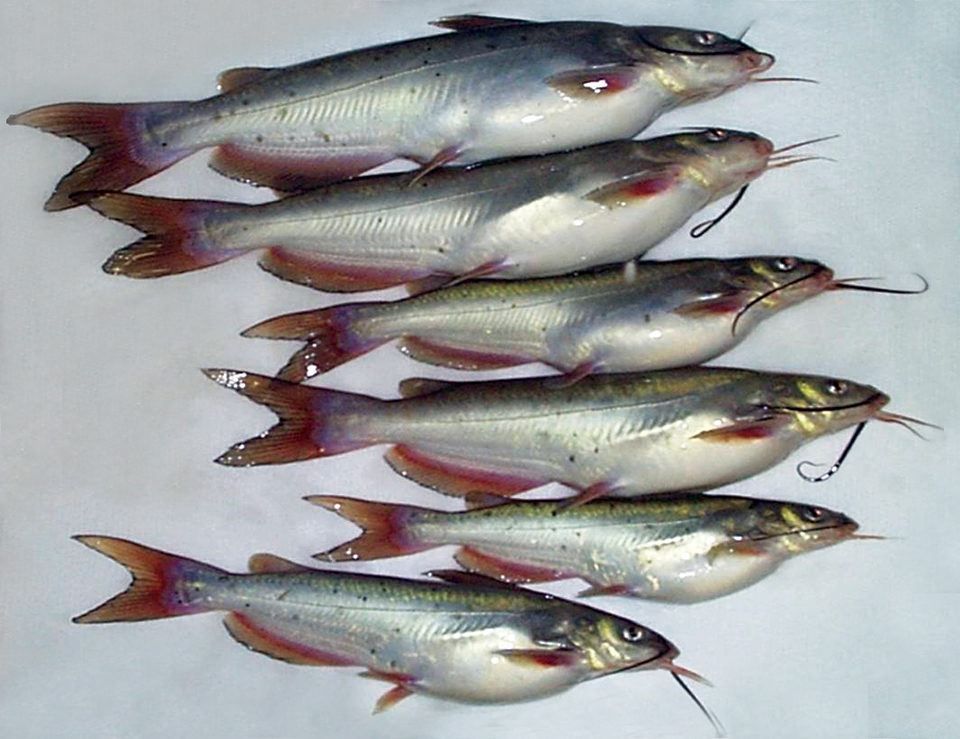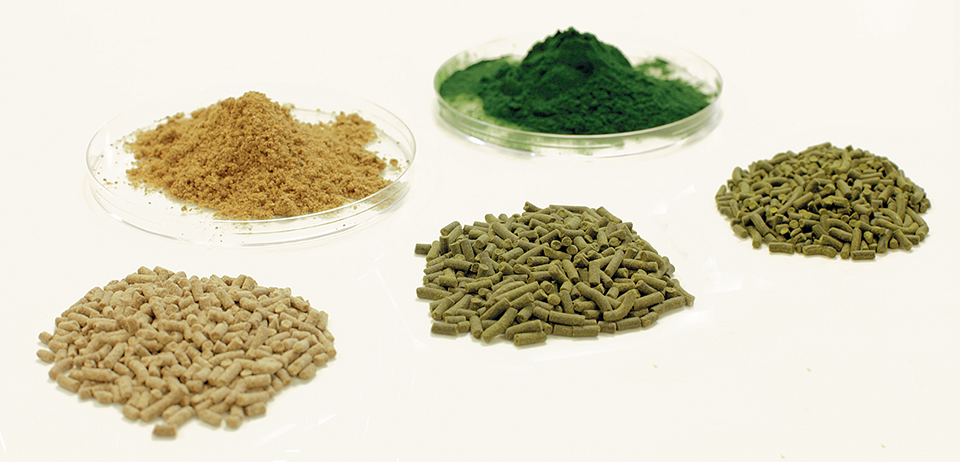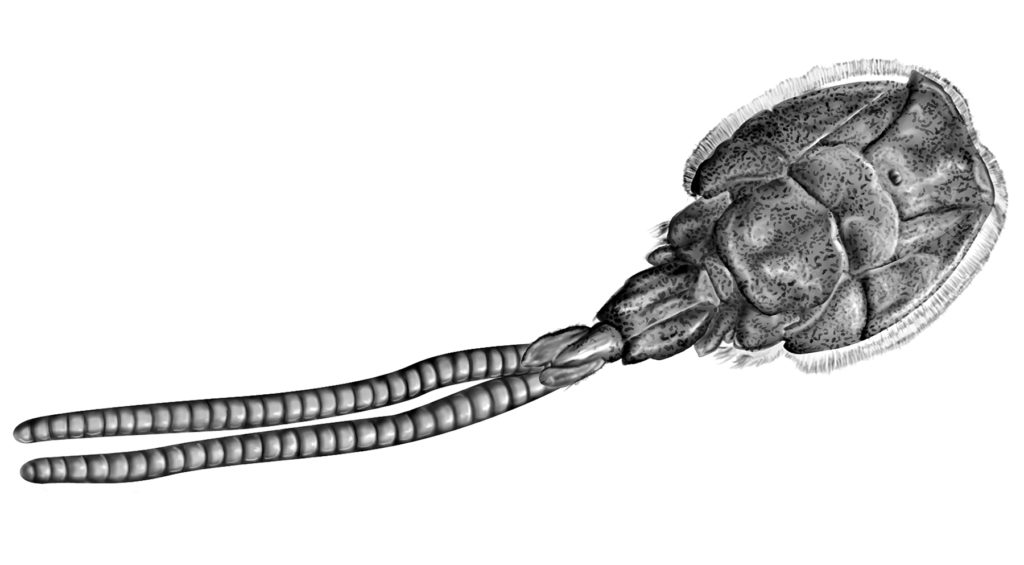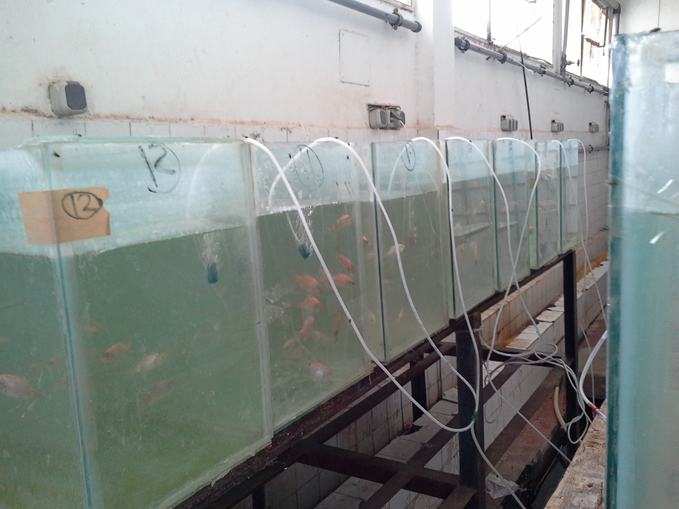Line selected for increased growth, fillet yield, resistance to enteric septicemia

The United States Department of Agriculture (USDA) 103 line of channel catfish was developed jointly between the USDA Agricultural Research Service Catfish Genetics Research Unit in Stoneville, Mississippi, and the Mississippi Agricultural and Forestry Experiment Station at the Thad Cochran National Warmwater Aquaculture Center in Stoneville to improve economically important traits and benefit the U.S. catfish-farming industry.
Released to the industry as the NWAC103 line in 2000, the superior-growing USDA103 line has since been further selected for increased growth, as well as fillet yield and resistance to enteric septicemia of catfish (ESC). After two successive generations of family selection, the USDA303 experimental line resulted.
Ongoing studies
Using a recirculating aquarium rack system with 23-l tanks in 2006, Dr. Brian Small reported a 21.0 percent improvement in growth of the USDA303 strain over the USDA103 strain of catfish, while feed efficiency was similar for the two. Using 110-l flow-through aquariums, Dr. Menghe Li and fellow researchers in 2006 found a marginal 5.1 percent improvement in final weight and 3.3 percent greater feed efficiency for the USDA303 strain.
Using 76-l flow-through aquariums in 2008, the main author found no significant improvement in weight gain or feed efficiency in a growth study comparing the two lines. Environmental interactions and within-strain variations may be causes of these contradictory results.
In aquarium challenge models, improved resistance to Edwardsiella ictaluri, the bacterium that causes ESC, was reported in 2007 by A. Lelania Bilodeau and fellow researchers for the USDA303 strain compared to the USDA103 strain. Conversely, fillet yield studies have not shown significant differences in fillet yield between these two strains. The apparent improvements in growth and resistance to ESC need to be further evaluated in a pond environment.
Evaluation for desired traits
As part of the selective-breeding program at the Thad Cochran National Warmwater Aquaculture Center, the authors recently obtained spawning channel catfish at various farms across the Mississippi Delta to compare the growth, fillet yield and resistance to E. ictaluri challenge of the fish to other catfish strains, including the USDA103 line. Strains of fish that are superior in one or more traits may be viable to cross with the USDA103 line of catfish.
The authors have also further selected the USDA303 line for improved growth, fillet yield and resistance to ESC, resulting in the USDA403 experimental line. In addition, they have developed a fast-growing line of catfish by selecting the USDA303 catfish exclusively for weight gain. These fish will also be evaluated for feed efficiency and susceptibility to disease.
Current research
Recent research at the Thad Cochran National Warmwater Aquaculture Center compared the growth performance and body composition of the USDA103 line, the USDA403 line, a fast-growing line selected exclusively for increased fingerling weight gain in aquariums and an industry pool group of channel catfish collected from three farms. Fish were fed once a day to apparent satiation for eight weeks. At the end of the study, fish were weighed and sampled for whole body composition.
At four weeks, feed intake and weight gain were highest in the fast-growing line, followed by the USDA403, USDA103 and industry pool groups. By eight weeks, feed consumption and weight gain were still highest in the fast-growing line of fish (Table 1). Feed conversion was lower in the fast-growing fish compared to the USDA103 line.
Peterson, Performance of four genetically different groups of channel catfish, Table 1
| Strain | Weight Gain (g) | Feed Intake (g) | Feed-Conversion Ratio | Condition Factor |
|---|---|---|---|---|
| Fast growth | 47.5a | 57.2a | 1.21a | .79a |
| USDA403 | 35.0a | 44.0b | 1.26ab | .74b |
| USDA103 | 33.1b | 42.9b | 1.30b | .76b |
| Industry pool | 22.5c | 27.8c | 1.24ab | .69c |
| Standard pooled error | 0.84 | 0.81 | 0.01 | 0.01 |
The fast-growing, USDA103 and USDA403 lines had higher condition factors and protein efficiency ratios than the industry pool fish. There were no differences in whole body proximate composition and nitrogen retention among the lines of fish.
Selected strains superior
The study demonstrated the superiority in growth of the USDA lines of catfish compared to fish collected from catfish farms throughout the Mississippi Delta. The lower protein efficiency ratio in the latter group of fish also suggested they were not as efficient in converting dietary protein into weight gain.
The industry pool fish will need to be evaluated for other production traits, such as disease resistance, reproductive performance and fillet yield. If these fish are superior in one or more of these traits, they may be viable to cross with the USDA103 lines of catfish.
(Editor’s Note: This article was originally published in the May/June 2009 print edition of the Global Aquaculture Advocate.)
Now that you've reached the end of the article ...
… please consider supporting GSA’s mission to advance responsible seafood practices through education, advocacy and third-party assurances. The Advocate aims to document the evolution of responsible seafood practices and share the expansive knowledge of our vast network of contributors.
By becoming a Global Seafood Alliance member, you’re ensuring that all of the pre-competitive work we do through member benefits, resources and events can continue. Individual membership costs just $50 a year.
Not a GSA member? Join us.
Authors
-
Brian C. Peterson, Ph.D.
Thad Cochran National Warmwater Aquaculture Center
U.S. Department of Agriculture Agricultural Research Service
Stoneville, Mississippi 38776 USA[118,111,103,46,97,100,115,117,46,115,114,97,64,110,111,115,114,101,116,101,112,46,110,97,105,114,98]
-
Brian G. Bosworth, Ph.D.
Thad Cochran National Warmwater Aquaculture Center
U.S. Department of Agriculture Agricultural Research Service
Stoneville, Mississippi 38776 USA -
Brian C. Small, Ph.D.
Thad Cochran National Warmwater Aquaculture Center
U.S. Department of Agriculture Agricultural Research Service
Stoneville, Mississippi 38776 USA
Tagged With
Related Posts

Aquafeeds
A look at protease enzymes in crustacean nutrition
Food digestion involves digestive enzymes to break down polymeric macromolecules and facilitate nutrient absorption. Enzyme supplementation in aquafeeds is a major alternative to improve feed quality and nutrient digestibility, gut health, compensate digestive enzymes when needed, and may also improve immune responses.

Aquafeeds
Algae alternative: Chlorella studied as protein source in tilapia feeds
Chlorella and other species have potential as protein sources in aquafeeds. In trials with tilapia fry raised in a recirculating system, the fish received a fishmeal-based control diet or feeds with portions of the fishmeal replaced by Chlorella.

Health & Welfare
Animal health giants have sea lice in their crosshairs
Alltech and Benchmark have been working on the next generation of sea lice solutions and believe they have new products that can help salmon farmers win.

Health & Welfare
Applied commercial breeding program for Nile tilapia in Egypt
A major goal of selective breeding program for Nile tilapia (Oreochromis niloticus) in Egypt is to select for fillet color and fillet weight in response to consumer preferences.


